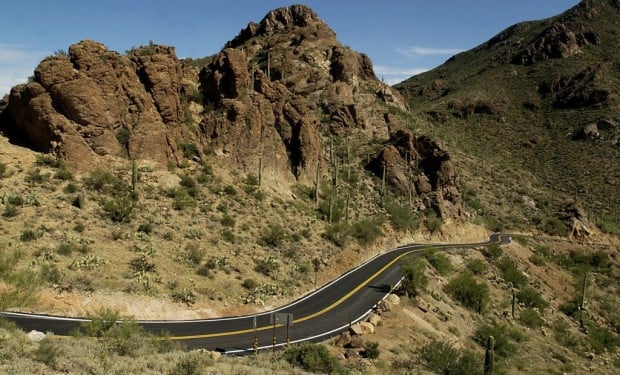Thomas Gates came to Arizona in 1866 with Billy Brannen, a fellow poker player.
The two made money hand over fist in Tucson, Las Cruces, N.M., and Santa Fe, where the partnership ended in 1867.
Gates was born in Mount Pleasant, Canada, in 1834. Indian Territory (now Oklahoma) was the family's next stop, and then on to California.
After parting ways with Brannen, Gates returned to California by way of Salt Lake City. He made several visits to Arizona in the following years, and sometime in the 1870s he was married in Los Angeles and brought his wife to Arizona.
He became partners with territorial legislator Albert Franklin Banta for some time and later invested in mining. In 1883, he acted as a lobbyist and helped repeal the bullion tax law. That same year he was head of the Democratic Territorial Central Committee. He was also a founding member of the Arizona Pioneers Historical Association and spent some time as a saloonkeeper.
He was appointed superintendent of the Yuma Prison by Gov. C. Meyer Zulick. In 1887, during a prison riot, he was stabbed in the neck and back. The trauma would haunt him for nearly a decade and eventually led to his suicide at the prison hospital.
Author William Ascarza wrote: "It was his legacy to discover the path through the Tucson Mountains, now called Gates Pass. Gates' objective was to establish a faster route between the Waterman Mountains in Avra Valley to the city of Tucson.
"Gates owned a profitable claim in the Waterman Mountains known as the Abbie Waterman Mine, which was 33 miles southwest of Tucson. It was to his economic advantage to find a shorter trade route to his carbonate mine. He discovered such a route via 'a natural canyon' that was 3,500 feet in height and a little over a mile long.
"Unfortunately, the Tucson Board of Supervisors failed to appropriate the necessary funding to build a road. Thomas Gates determined it a necessity and funded the project out of his own pocket. The total cost was $1,000. The result was the completion of a dirt road that directly linked Tucson with Avra Valley and shortened Gates' travel route from Tucson to the Waterman Mountains by eight miles."
Editor's note
Each week the Star tells the stories behind Tucson street names. If you have streets to suggest or stories to share, contact writer David Leighton at streetsmarts@azstarnet.com
Sources: William Ascarza, "Zenith on the Horizon: An Encyclopedic Look at the Tucson Mountains from A to Z," Tucson Mountain Press, 2008 C.L. Sonnichsen, "Pioneer Heritage," The Arizona Historical Society, 1984





